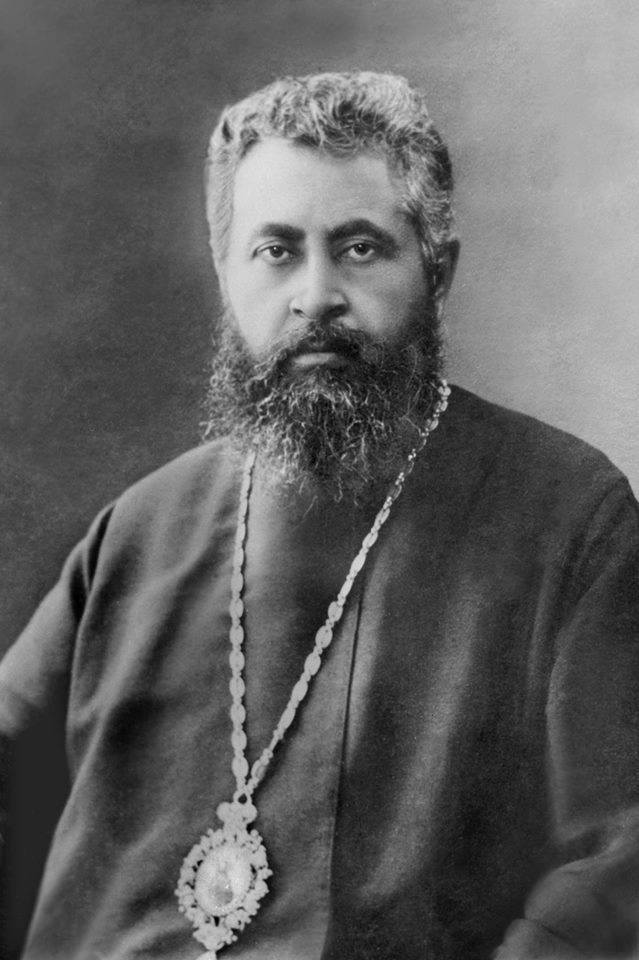In the early years of the 20th century, a generation of Armenian clergymen educated in Europe committed to bringing to light the oldest history of the Armenian Church in all its richness. Albeit little known, one of the key figures in this endeavor was Bishop Karapet Ter-Mkrtchian.
He was born on March 29, 1866, in Tsghna, a village in the county of Goghtn, Nakhichevan, into a family of merchants. He received his elementary education in the local parish school, following which he attended the county school of Zakatala. In 1880-1888 he studied at the Gevorgian Jemaran (Seminary) of Holy Echmiadzin. Upon his graduation he taught at the Jemaran, where he was also the chief librarian. In 1889, he was ordained deacon along with two future Catholicoi: Gevorg Cheorekchian (Catholicos Gevorg VI of All Armenians) and Garegin Hovsepiants (Catholicos Garegin I of the Great House of Cilicia).
The same year he left for Germany to continue his higher education in the universities of Leipzig, Berlin, and Tubingen. He also attended lectures at the Sorbonne in Paris as well as the Protestant Theology classes at Marburg University. During his student years, he contributed scholarly articles to German theological journals. In 1893, he published a book in German entitled “The Paulicians in the Byzantine Empire and Related Sectarian Manifestations in Armenia.” He graduated with the degrees of Master of Theology and a Ph.D., following which he returned to Echmiadzin in 1894. In 1895, he published a second volume in German, “The Tondrakians in Our Days.” He became one of the main experts in these two sects that were relevant to the history of the Armenian Church in medieval times. Also in 1895, he was ordained priest and elevated to the rank of vartabed, followed by his appointment as dean’s assistant and teacher of theology and religion at the Jemaran.
In 1899, Very Rev. Fr. Ter-Mkrtchian was appointed dean of the Gevorgian Jemaran, a position he held until 1902. In 1903-1905, he served as Vicar of the Prelacy of Yerevan. At the same time, for brief periods, he was editor of the “Ararat” journal of the Holy See in 1902, 1904, and 1905-1906.
In 1902-1903, he was commissioned to prepare and edit a new edition of the Bible. In 1903, however, with the expropriation of Church properties by the Russian imperial government and the hardship it caused to the Holy See, the work remained unfinished and was not published. In “National Church,” a 1903 booklet, Ter-Mkrtchian presented the Armenian Apostolic Church with its three fundamental attributes: national character, religious spirit, and persecuted status.
Ter-Mkrtchian discovered an important Armenian manuscript in the Katoghike Church of Yerevan in 1904, with writings by Irenaeus of Lyons. The first of them, “Demonstration of the Apostolic Preaching,” is a very valuable document on the Christian theology of the second century, the Greek original of which is lost. He translated the work into German with Yervand Ter-Minassian, which was published in a bilingual German-Armenian edition in 1907 in Leipzig. Thanks to Ter-Mkrtchian and Ter-Minassian’s efforts, the original in Armenian of the “Refutations” by Timothy II of Alexandria, also known as Timothy Ailuros, was published also in Leipzig in 1908, with forewords in Armenian and German.
In 1907, Ter-Mkrtchian was consecrated dzayrakuyn vartabed (proto-archimandrite), followed by his ordination as bishop in 1909. In 1907, however, he quit the Holy See, escaping an unfavorable climate created by a number of congregants who made his life difficult with obstacles and false accusations, and left for Baku, where he taught at a Russian gymnasium. In 1908, he published the first volume of “History of the Armenian Church” in Vagharshapat. Between 1908 and 1912 he was the Primate of the Armenian Prelacy of Atrpatakan. He undertook the publication of the “Aravot” newspaper of Tabriz (1909-1912) and during this period he brought to light and sent to the library of Echmiadzin ancient Armenian manuscripts.
In 1914, again with Yervand Ter-Minassian, he published “Seal of Faith,” an important collection of theological writings he had found in the monastery of Protomartyr St. Stephen, in Darashamb, near Julfa. Attached to that work there is an important study about the history of the Armenian Church in the 6th and 7th centuries, as well as on the theological positions and bibliography.
In his books and articles, Ter-Mkrtchian discussed some of the most thorny and arguable points in the history of the Armenian Church, the Armenian participation in the theological discussions of the Christian world, the rejection of the Council of Chalcedon, the motivations that led to the writing of the “Book of Letters,” and other issues. He defended and justified the argument, currently accepted, that the Armenian Church clarified its negative stance on the Council of Chalcedon in the last quarter of the 5th century, under the pontificate of Catholicos Hovhannes I Mandakouni.
In 1914-1915, Bishop Ter-Mkrtchian was the Primate of the Armenian Prelacy of Shamakhi. He passed away on Dec. 2, 1915, in Baku, at the age of 49. He is buried in the courtyard of St. Gregory the Illuminator’s Cathedral in Baku. It was the only church left standing in Azerbaijan during the Soviet period, but it was burned down by an Azerbaijani mob in 1989. Today it stands in a ruined state as testimony to Azerbaijan’s “commitment to culture and tolerance.”

